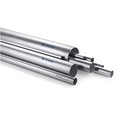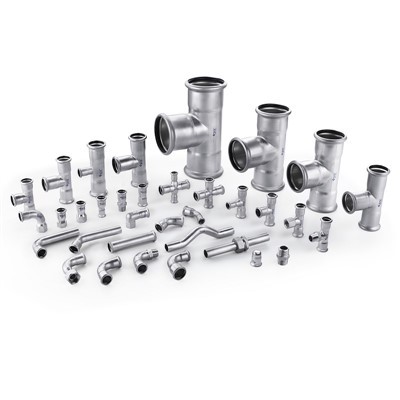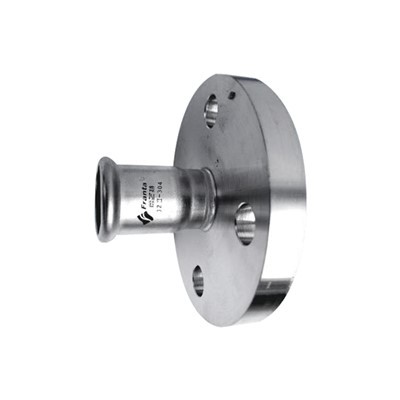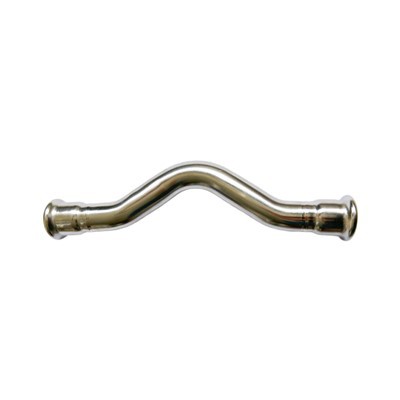Stainless Steel Pipe and Fittings
A steel pipe fitting is a piece of steel used to connect separate sections of pipe together. Fittings can be used to extend lengths of pipe or to create angles in a piping system, and they're necessary to regulate and manipulate the flow of air or fluid.
Benefits of Steel Pipe Fittings
Stainless steels in various forms
Stainless steel can stand against heat treatment, so getting pipe fittings with just the right amount of Carbon for every application is suitable. As it is less expensive it is used in a wide range of spread. When steel is needed in enormous quantities, ferritic stainless steel is often used. Automobile industries use austenitic stainless steel often as it promotes resistance to erosion. Martensitic stainless steel is used in the production of wires and springs due to its strength. Once the carbon concentration exceeds 1.0 percent, it is only employed for particular, non-industrial purposes.
Versatile
Industries like electric power, refining, building and construction, crude oil, etc. use these stainless steel pipe fittings. Some of the applications of these steel pipe and fittings are found in the home too. Water, various gases, oil, or steam can be transported through stainless steel pipe fittings. They are also used in fire sprinkler systems and pipelines.Stainless pipe fittings are substantially more resistant to rust due to the addition of stainless steel. Chrome-plated pipe fittings preserve steel’s fresh appearance and prevent corrosion. Since chrome plating is able to produce a naturally brilliant shine, it is increasingly used in automobiles.
Steel and durability
In the steel pipe and fittings industry, stainless steel has long been regarded as one of the most durable and tough steels due to its durability and toughness. Stainless steel 304 and 316 Pipe Fittings, on the other hand, are the most frequent grades. The heat treatment gives stainless steel 304 pipe fittings the ability to become significantly more powerful. The more Chromium-nickel-iron alloys are added to the steel, the stronger it becomes, and this is why it is regarded as one of the strongest steel kinds.
Why Choose us
Quality
Our factory is committed to maintaining high-quality standards and uses advanced technology and equipment to manufacture products that meet customer requirements.
Experience
The company has been in the industry for over 20 years, which means they have accumulated a wealth of experience and expertise.
High-quality standards
Our products are made to high-quality standards, ensuring that they are durable and long-lasting. We use only the best materials and the latest manufacturing techniques to create our products.
Customer service
We pride ourselves on providing excellent customer service and ensuring that our customers are satisfied with their purchases. We are always available to answer any questions or concerns that our customers may have.
Types of Steel Pipe and Fittings
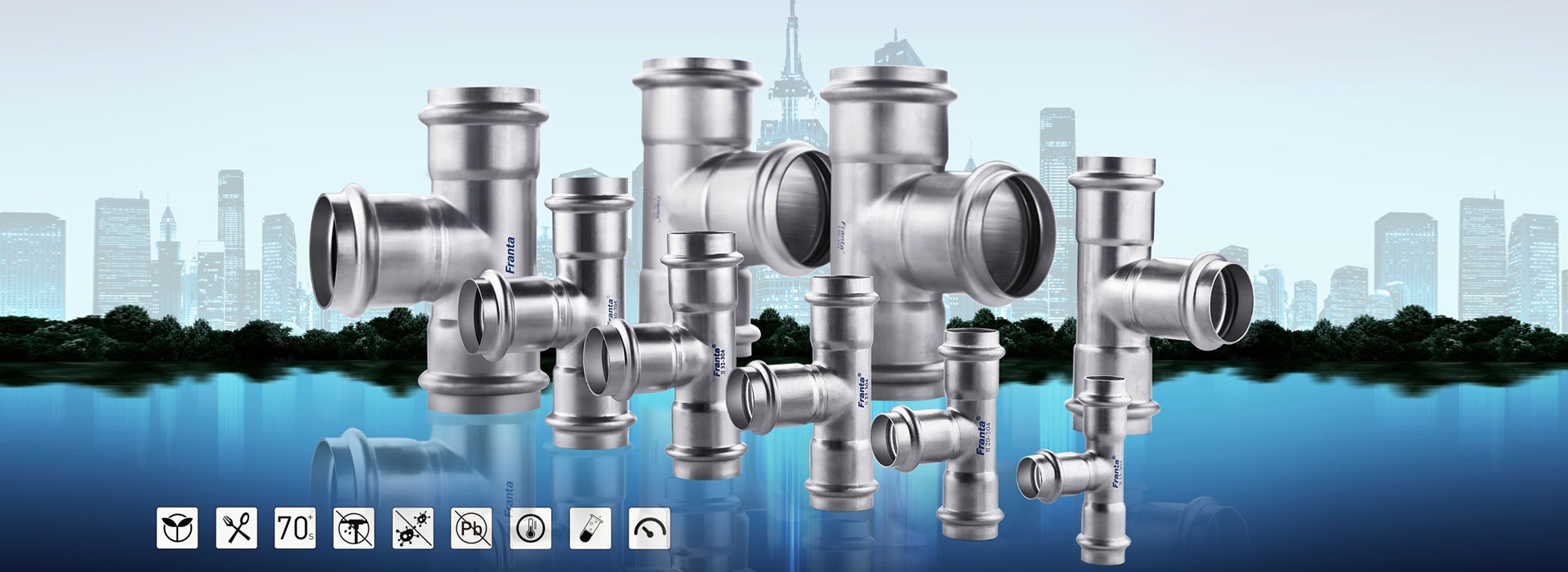
Tee, wye, cross and elbow fittings
Tee and Wye Fittings - Tees and wyes are used to connect three pieces of pipe. Tees can have one inlet and two outlets at 90-degree angles in the shape of a “T” and are used to split a supply line, or they can combine two lines into one outlet. You often see tee fittings connected to potable water supply lines. A wye is shaped like a “Y” with the two inlets coming together at roughly 45 degrees into a single outlet in drain applications. Sanitary wyes allow wastewater to enter a drain pipe from the side, while the second part of the “Y” aligns with the pipe to allow sewer gases to vent upward.Cross Fittings - Crosses have four openings for pipes – one inlet and three outlets, or three inlets and one outlet, depending on the need. These four-way fittings are less common and used in some irrigation and sprinkler applications.Elbow Fittings - Elbows change the direction of flow between two pipes. Common elbows have 90-, 60-, 45- and 22 1/2-degree bends and are used to make a turn. They can be joined together to move around obstructions in the pipe run.
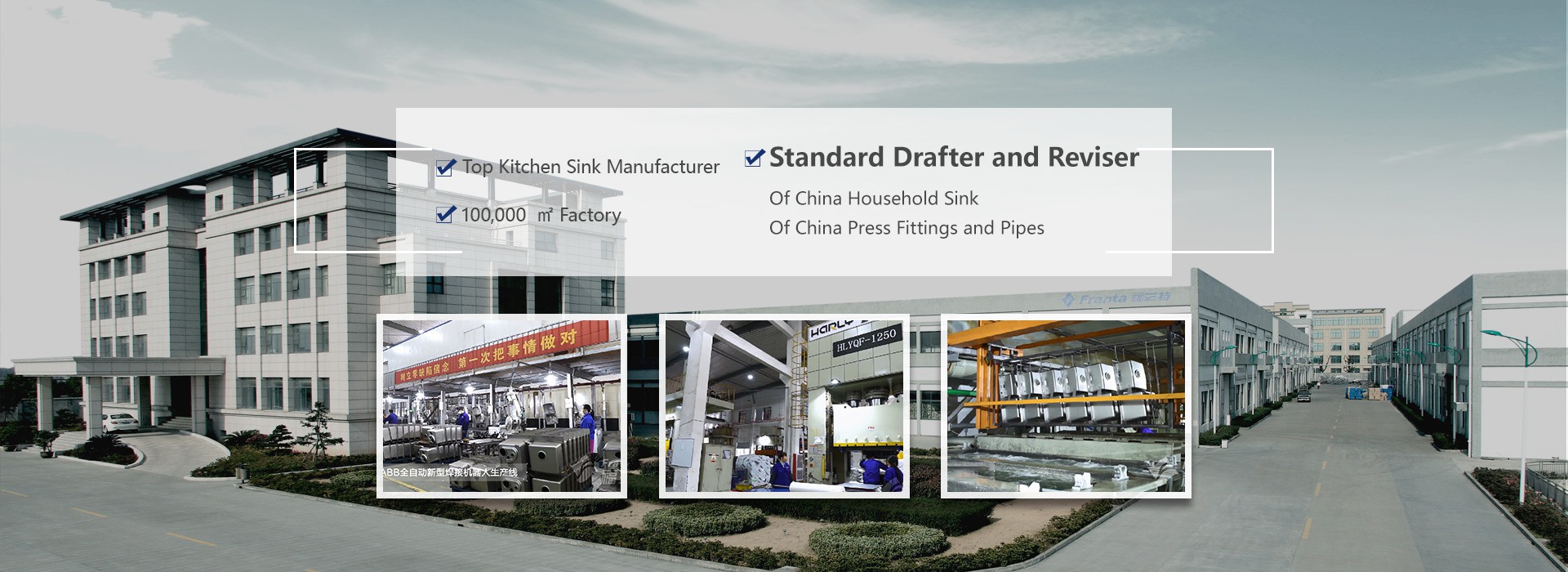
Coupling, adapter, bushing and union fittings
Coupling and Adapter Fittings - Pipe couplers slip over the outside of two pipes to connect them, usually permanently. A coupling can be a reducer, or reducing coupling, meaning they reduce flow by joining a larger pipe to a smaller size. Adapters are used when connecting two pipes of different types. For example, an adapter could be fitted on the end of a plain pipe to allow a threaded connection at the other side of the adapter.Bushing Fittings - Bushings, sometimes called reducer bushings, are used for connecting two pipes of different sizes. The larger diameter of the bushing fits inside of the larger pipe. The smaller pipe is then inserted into the smaller end of the bushing.Union Fittings - Unions are similar to couplings in that they connect two similar pipes. With pipe unions, a nut or threaded ring in the middle of the fitting is tightened to join two pipes. It can be easily removed by loosening the ring to disconnect the pipes, while a coupling must to be cut out to disconnect.
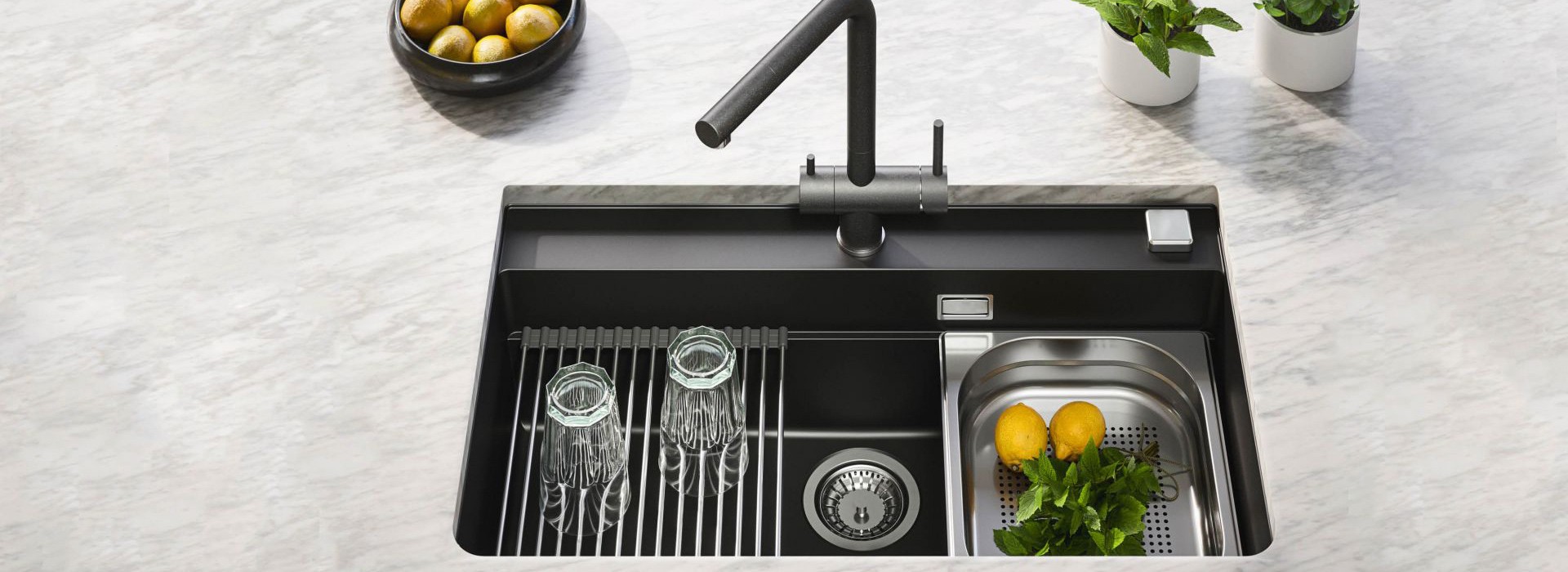
Trap and flange fittings
Trap Fittings - Traps are the horizontal dips or bends in drainage pipes found underneath kitchen and bathroom sinks. They are shaped like a “U” or sideways “P” and serve two purposes. First, drain water is trapped in the arc to create a barrier that prevents sewer gases from rising into the home. Traps also catch debris to avoid clogging farther down the drainage system.Flange Fittings - A flange is a flat, round fitting that creates a tight seal with bolts or clamps. They are used when pipes pass through walls, ceilings and floors. The most common flange for DIY plumbers is the closet flange, or toilet flange. This is what secures a toilet to the floor and also connects the toilet drain to the drain pipe.

Cap, plug and nipple fittings
Cap Fittings - A cap fits over the end of a pipe to stop the flow of water or gas. These fittings can be used for the permanent termination point of a pipe, or used temporarily to cut off supply during a plumbing project. Plug Fittings - Plugs used at the end of a pipe to seal the opening, similar to a cap. The difference is that a plug fits into the threaded pipe opening to make the seal, while caps fit over the opening. They are commonly found at cleanout locations for sewer systems.Nipple Fittings - Nipples are short sections of pipe that are male-threaded at each end and used for connecting two female-threaded pipe ends or fittings.
Things to Note When Purchasing Steel Pipes and Accessories
Size
Size is the most important parameter that should be considered while buying steel pipe and fittings. There are various options available for size of pipe fittings like:
● Standard English sizes: These sizes range from 1/8” to greater than 36 “.
● Metric sizes: Popular metric sizes range from less than 10 mm to greater than 1000 mm.
● Schedule: The "schedule numbers" are assigned by the National Standards Institute (ANSI) in order to classify the thickness of walls for use with different pressure. ANSI schedule numbers include all pipe and fitting sizes from NPS 1/8 through NPS 36, which are classified as Standard (STD), Extra Strong (XS) and Double Extra Strong (XXS) and all wall thicknesses by ANSI schedule number.
Shape of fittings
Steel pipe and fittings is another important parameter the buyer's should consider while selecting pipe fittings. The popular shapes available for pipe fittings include oval, round, square and rectangular. However, the round or circular shape is the most popular one.
Material
The type of material used for making pipe fittings is also very important. Construction and material specifications of pipe fittings are application-dependent. Optimization of component selection largely requires consultation of the users with the fitting suppliers. Actually a wide range of materials are used for making pipe fittings. The buyer's are often confused judging the right material for fittings. The most common materials used include aluminum, carbon or graphite, ABS (Acrylonitrile Butadiene Styrene), CPVC (Chlorinated Polyvinyl Chloride), brass, bronze, ceramic or ceramic lined, polyvinyl chloride (PVC), stainless steel, carbon and alloy steel, concrete, EPDM, clay or vitrified clay, fiberglass or composite, fluororesin (PFA), glass or glass lined, rubber or elastomer, gray or cast iron, ductile iron, lead, neoprene, nylon or polyamide, polyethylene (PE), polypropylene (PP), PTFE or PTFE lined, titanium, and zirconium.
Pipe fitting end
Buyers are often confused while selecting pipe fitting ends. Proper selection for pipe fitting end is very essential for proper flow of the material. The ends of pipe fittings are built slightly larger than in such a manner so that the connections can easily fit in without narrowing the inner diameter (ID) of the pipe. This keeps flow consistent. The most common fitting ends available are:
Pipe Fitting End: Buyers are often confused while selecting pipe fitting ends. Proper selection for pipe fitting end is very essential for proper flow of the material. The ends of pipe fittings are built slightly larger than in such a manner so that the connections can easily fit in without narrowing the inner diameter (ID) of the pipe. This keeps flow consistent. The most common fitting ends available are:
● Male pipe thread
● Female pipe thread
● Plain end bell or socket
● Flare or flange
● Male straight thread
● Female straight thread
● Compression fitting
● Groove
● Pipe clamp end
● Barb or rib
Steel Pipe and Fittings Connector types
Male threaded
In this case, threads are exterior and are designed to screw into the inside of a larger diameter pipe end with internal threading.
Female threaded
Here the threads are interior, designed to receive male threaded pipe fittings.
Male slip fit
In this case, there are no threads, and the fittings are designed to slip into a female sleeve, slightly larger in size.
Female slip fit
There are no threads, and are made to receive a narrower male slip fit.
The Different Types of Stainless Steel Pipe And Fittings and Their Uses
Elbow fittings
These fittings are used to change the direction of the pipe. They are available in 90-degree, 45-degree, and 180-degree angles.
Tee fittings
These fittings are used to connect three pipes together, creating a T shape. They are commonly used in pipelines for liquid and gas transport.
Reducer fittings
These fittings are used to connect pipes of different sizes, allowing for the flow of fluids from larger pipes to smaller ones, or vice versa.
Coupling fittings
These fittings are used to connect two pipes together, providing a secure and leak-proof connection.
Cross fittings
These fittings are used to connect four pipes together, creating a cross shape. They are commonly used in pipelines for liquid and gas transport.
Union fittings
These fittings are used to provide easy access to pipes for maintenance or repair. They consist of two parts that can be easily disconnected for access.
Nipple fittings
These fittings are used to connect two pipes together, typically in situations where the pipes are close together.
Flange fittings
These fittings are used to connect pipes or valves to other equipment, such as pumps or tanks. They are commonly used in industrial settings.
Cap fittings
These fittings are used to close off the end of a pipe, providing a secure and leak-proof seal.
Bend fittings
These fittings are used to create bends in pipes, allowing them to follow a specific path or route.
The construction industry
Steel pipe and fittings is both durable and lightweight, it' s commonly utilized by the construction industry in commercial and residential buildings, as well as in industry sectors including power, water, sewer, manufacturing and more. Steel pipe is also a top choice in the construction industry because it' s resistant to rust and corrosion, meaning that it won' t require frequent repairs or replacement. This is especially important in water, plumbing and electrical systems, since leaks or breaks in the steel pipe can be both dangerous and costly.
The oil and gas industry
Steel pipe and fittings is ideal for use in extreme conditions such as corrosive environments, low and high temperatures and high pressure. For this reason, steel pipe is prevalent in the oil and gas industry, especially in pipes like gathering lines (the tubes that transport oil or gas from the producing area to a storage facility or larger main pipeline), and pipe trunk lines (the welded, large-diameter steel pipes that are used to transport natural gas over long distances). Because of steel pipe' s durability and versatility, it can stand up to the unique needs of the oil and gas industry.
The shipbuilding industry
The strength of steel makes it a great option for ship building since it withstands vibrations, shock and high pressure. Unlike other metals, steel with bend rather than break in extreme conditions, which means it' s less likely to crack or leak. In the shipbuilding industry, steel pipe and fittings is designed and manufactured for the boilers, super heaters and pressure systems of a ship.
The textile industry
The versatility of steel pipe and fittings makes it a popular choice in the textile industry for the production of bale openers, mixers, carding machines, spinning machines, winding machines and texturing machines.
The agricultural industry
Steel pipe and fittings is frequently used in agricultural fittings due to its durability and ability to withstand pressure. Steel is also sometimes mixed with carbon to create a more lightweight yet sturdy agricultural fitting. Farmers and other agricultural organizations use steel pipe in dozens of applications, including tractor engines, grain elevators, field drainage systems, fertilizer applications, vent pipe systems and more.
Industrial applications
Steel pipe and fittings is a common choice in manufacturing facilities, warehouses and other industrial locations because it' s rust-proof and doesn' t corrode, affording facilities a lifetime of dependable use. Round steel tubing is often used to transport liquids or gas from one area of an industrial facility to another, as well as in the construction of industry structures itself.
Additional applications
In addition to the above listed, steel pipe and fittings is commonly found in:
• Power plants
• Diary and food processing facilities
• Modern architecture
• Chemical facilities
• Water treatment facilities
• Synthetic fiber production
• Desalination
• Energy industries
Varieties of Steel Pipe Fittings
Galvanized Steel
In order to protect steel from rust and corrosion, steel is coated in layers of zinc through a chemical process. Galvanized steel offers resistance to rust and corrosion and is highly preferred for making pipe fittings and pipe. Galvanized steel also increase the longevity of pipe fittings.
Fittings made of galvanized steel are available in standard sizes ranging from 8mm to 150mm. Galvanized pipe fittings are usually manufactured from seamless tube, forgings or rolled bar or welded tube following some specific standards.Galvanized steel pipe fittings are for all types of piping inside a building. They are also used in water supply lines, but not in gas pipelines.
Steel Pipe FttingsCarbon Steel
Carbon steel is much more durable and stronger than other varieties of steel, which makes it suitable for making pipe fittings. Also known as plain carbon steel, carbon steel is a malleable and iron-based metal, containing mainly carbon and small amounts of manganese and other elements. Steel is subjected to various processes and can either be cast to shape or wrought into various mill forms from which finished parts are formed, forged, stamped, machined or otherwise shaped. Carbon is the main hardening and strengthening element present in steel, which offers maximum hardness and strength; and decreased ductility and weld-ability. Carbon steel pipe fittings come in various sizes and shapes.
Again there are some butt-weld carbon fittings, which feature beveled edges and form a channel of lesser depth for the bead of weld that fixes the piece together. Butt-weld fittings are mainly used to join sections of pipe where permanent and welded connections are required. Elbows, reducers, tees, etc are made of butt-weld steel fittings.
How To Prevent Steel Pipes And Accessories From Rusting?
The primary line of defense against rust on steel pipe and fittings is the application of a suitable protective coating. This coating acts as a barrier between the steel and the external environment. There are several common types of coatings:
● Paint: Regular paint, when applied correctly, can provide a basic level of protection. It not only adds a layer of defense against moisture and oxygen but also offers aesthetic appeal.
● Epoxy: These coatings are highly durable and chemically resistant. They are often used in more corrosive environments, such as industrial settings or where the pipes come into contact with chemicals.
● Galvanizing: Galvanizing involves applying a layer of zinc to the steel. This zinc sacrificially corrodes before the steel does, providing long-lasting protection. It's particularly effective in outdoor and marine environments.
When choosing a coating, it's crucial to consider the specific environmental conditions the pipes will face, including temperature, humidity, and the presence of corrosive substances.
Rust prevention demands constant attention. Conducting regular inspections on steel pipe and fittingss is crucial to identifying early signs of rust or corrosion. This proactive approach enables timely intervention before the damage escalates.
Keep a keen eye out for any discoloration, pitting, or flaking on the pipe's surface. Establishing a routine inspection schedule is imperative for effectively catching rust-related issues in their early stages. Consistency in these inspections is pivotal for timely intervention and ensuring the longevity of the pipes.
Moisture acts as a catalyst for rust, making it essential to keep steel pipes dry. When exposed to rain, humidity, or other moisture sources, implement protective measures such as covers, enclosures, or specialized coatings resistant to moisture.
The key strategy in preventing rust is to hinder direct contact between steel and water. Ensuring steel pipes remain dry is pivotal for their longevity and optimal functionality. By minimizing or eliminating contact with moisture, you disrupt the conditions necessary for rust to develop, fortifying the pipes against corrosion.
Rust inhibitors, or corrosion inhibitors, are purpose-built chemicals to impede or halt the formation of rust. They form a protective barrier on the steel surface, effectively shielding it from corrosive agents. Adhere to the manufacturer's guidelines for correct application, considering that these inhibitors might require periodic reapplication contingent on environmental factors and the specific product used.
The selection of an inhibitor should align with the environmental conditions to which the steel is exposed. Heightened awareness of the surroundings is essential in determining the optimal frequency for reapplication, ensuring sustained protection against rust.
Maintaining an acute awareness of the environmental conditions enveloping your steel pipes is pivotal in rust prevention. Extreme weather, elevated humidity levels, and exposure to corrosive substances like acids or salt markedly escalate the risk of rust. Consideration of these conditions empowers you to introduce extra protective measures as needed and tailor your maintenance schedule accordingly.
This environmental awareness forms the bedrock for well-informed decisions in rust prevention. Recognizing the distinctive challenges posed by your surroundings enables proactive implementation of supplementary protective measures when required, fortifying your defense against rust.
Certificate
Franta invests to build auto polishing, auto passivization and auto laser welding lines for stainless steel kitchen sink manufacturing. We also have industry leading incoming material inspection spectrum analyzer, salt spray test machine, high temperature and humidity test machine to control sinks quality.



Asked Question
Q: How tight should steel pipe fittings be?
Q: What type of material is acceptable for fittings used with steel pipe?
Q: How far does pipe go into fitting?
Q: Can you overtighten galvanized pipe?
Q: How many wraps of Teflon tape on pipe threads?
Q: What is the commonest method of joining steel pipe is to use?
Q: What is the rule for 2 pipe size?
Q: How do I know what size pipe fitting I need?
Q: Is pipe fitting difficult?
Q: What does ISO mean in pipe fittings?
Q: What requires a tee fitting?
Q: How do you connect steel pipe to steel pipe?
Q: What is the most common type of steel pipe?
Q: What are steel pipes and fittings?
Q: What are the advantages of using steel pipes and fittings?
Q: What are the common types of steel pipes and fittings?
Q: What factors should be considered when selecting steel pipes and fittings?
Q: How do you maintain and clean steel pipes and fittings?
Q: Can you run electrical wire through steel pipe?
Q: What is the process for manufacturing steel pipes and fittings?
As one of the most professional steel pipe and fittings manufacturers and suppliers in China, we're featured by quality products and good service. Please rest assured to wholesale customized steel pipe and fittings at competitive price from our factory.
threaded fittings for liquid transfer, stainless steel fittings for construction, stainless steel cap
